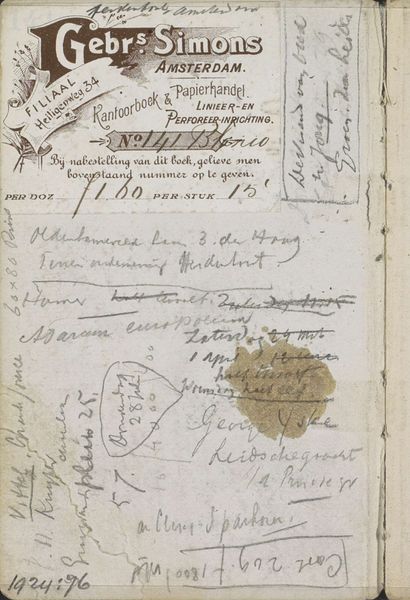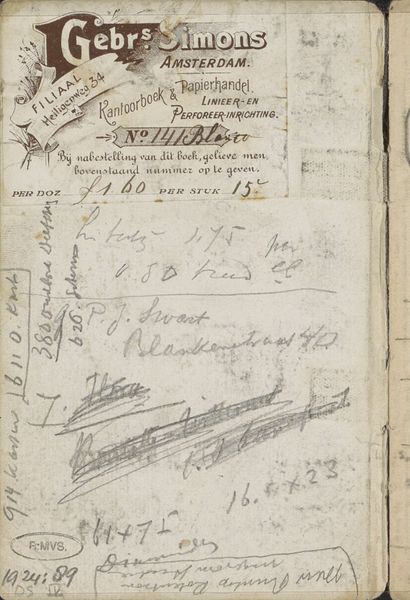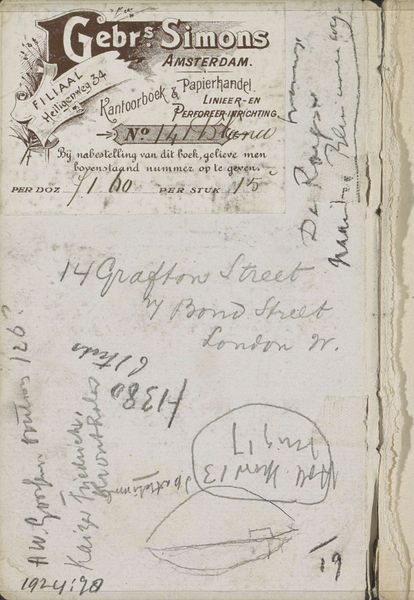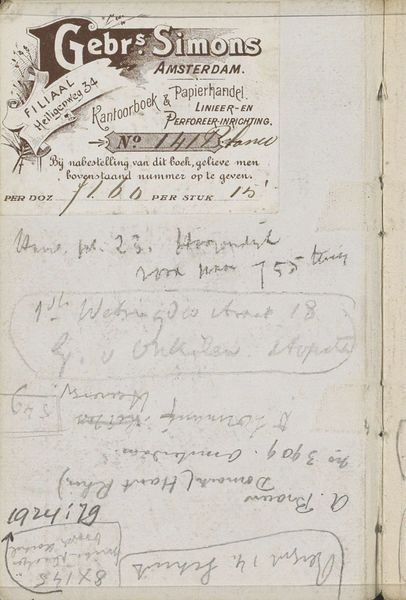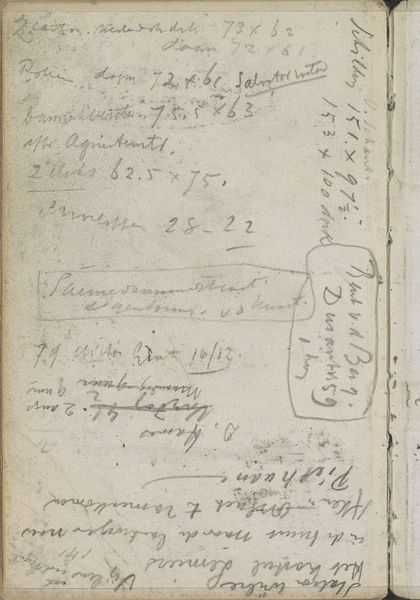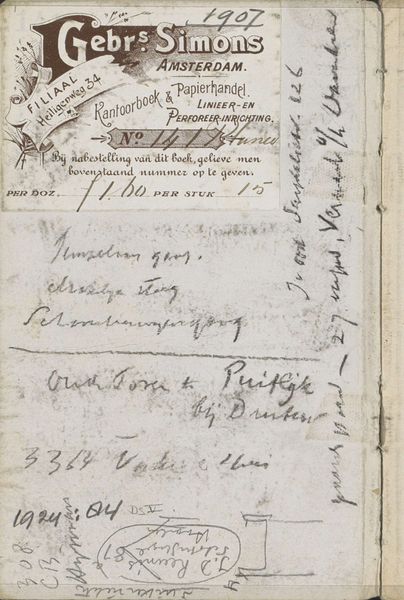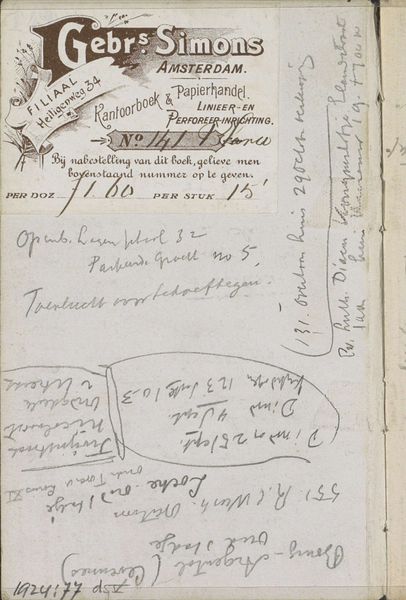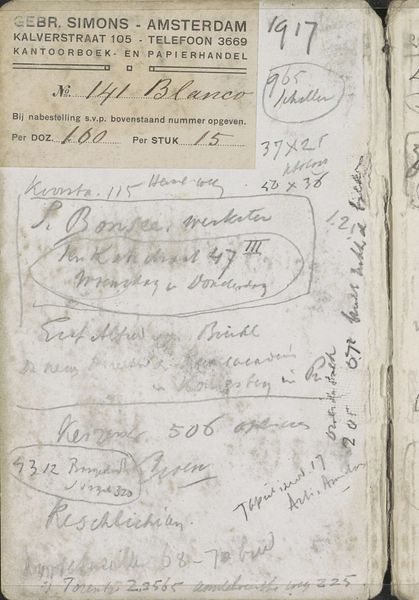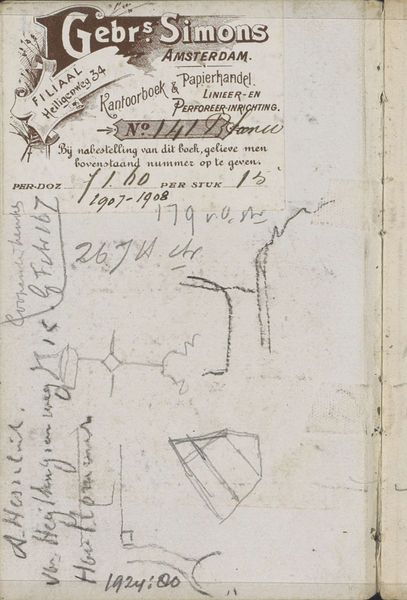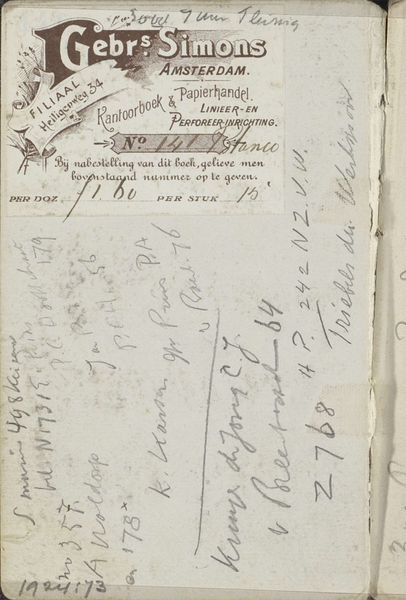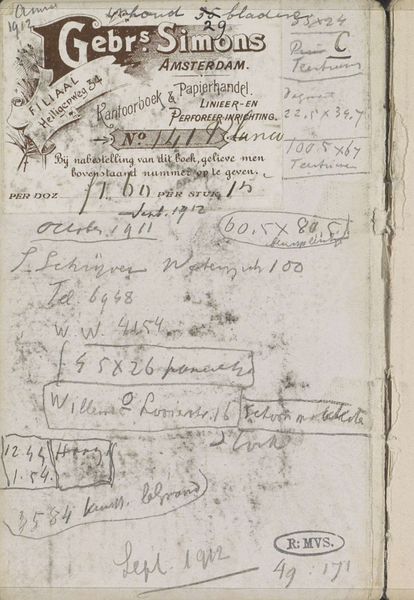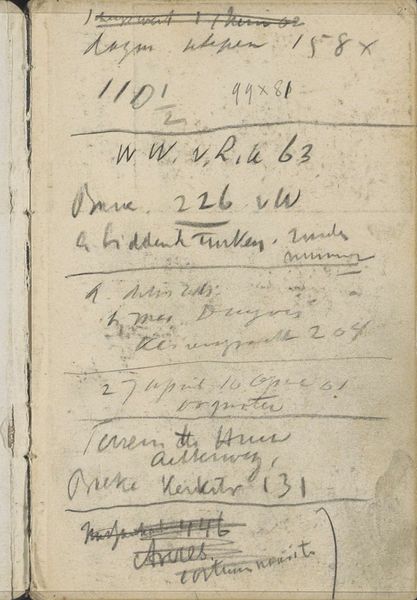
Copyright: Rijks Museum: Open Domain
Editor: We're looking at George Hendrik Breitner's "Studies en annotaties," made around 1903. It's a mixed-media drawing, using ink on paper. It looks like a page from a sketchbook, maybe a merchant's ledger? There are scribbled drawings and a lot of numbers... How do you interpret this work? Curator: It's fascinating to see how Breitner, known for his paintings of Amsterdam street life, uses this seemingly mundane page. The commercial advertisement for 'Gebrs Simons' and the handwritten notes suggest a specific social context. Consider the rise of commerce and industry at the turn of the century and its impact on artistic practice. What might the incorporation of this printed ephemera into a sketchbook signify? Editor: Maybe he's commenting on the commercialization of art, or even blurring the lines between fine art and everyday life? Curator: Exactly. Breitner wasn’t just recording what he saw, he was actively engaging with the visual culture around him. Think about the politics of imagery at the time, and the increasing prevalence of advertising in public spaces. Is he celebrating this new visual landscape, or critiquing it? Editor: It's hard to say for sure. The contrast between the calculated typography and the informal doodles create such an interesting tension. I initially dismissed this piece but now recognize the way that everyday life may challenge our perception. Curator: Absolutely, this sketch reveals the way institutional frameworks around art elevate particular artforms above popular imagery or ephemera, although perhaps now, we can accept both into art history. Editor: It’s amazing how a simple sketchbook page can reveal so much about the artist's world, and our own biases when approaching it. Curator: Indeed, this exercise can also help us reflect upon our current public visual spheres to better comprehend their history.
Comments
No comments
Be the first to comment and join the conversation on the ultimate creative platform.
